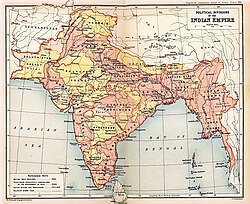
Indian postal systems for efficient military and governmental communications had developed long before the arrival of Europeans. When the Portuguese, Dutch, French, Danish and British conquered the Marathas who had already defeated the Mughals, their postal systems existed alongside those of many somewhat independent states. The British East India Company gradually annexed the other powers on the sub-continent and brought into existence a British administrative system over most of modern-day India, with a need to establish and maintain both official and commercial mail systems.

This is an overview of the postage stamps and postal history of Australia.

The British Central Africa Protectorate existed in the area of present-day Malawi between 1891 and 1907.
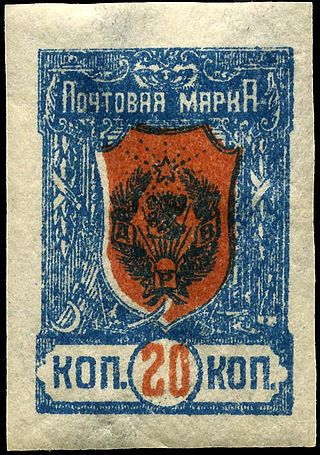
The Far Eastern Republic, sometimes called the Chita Republic, existed from April 1920 to November 1922 in the easternmost part of Siberia. It was formed from the Amur, Transbaikal, Kamchatka, Sakhalin, and Primorye regions. In theory, it extended from Lake Baikal to Vladivostok but, in May 1921, the Priamur and Maritime Provinces seceded. Although nominally independent, it was largely controlled by the RSFSR and its main purpose was to be a democratic buffer state between the RSFSR and the territories occupied by Japan during the Russian Civil War to avoid war with Japan. Initially, its capital was Verkhneudinsk, but from October 1920 it was Chita. On 15 November 1922, after the war ended and the Japanese withdrew from Vladivostok, the Far Eastern Republic was annexed by Soviet Russia.
This is a survey of the postage stamps and postal history of Bechuanaland Protectorate.
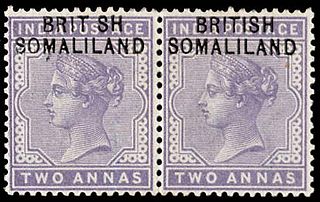
Originally mail from British Somaliland used postage stamps of Egypt, then India. In 1903, about 30 types of stamps of India were overprinted "BRITISH / SOMALILAND".

A revenue stamp, tax stamp, duty stamp or fiscal stamp is a (usually) adhesive label used to designate collected taxes or fees on documents, tobacco, alcoholic drinks, drugs and medicines, playing cards, hunting licenses, firearm registration, and many other things. Typically, businesses purchase the stamps from the government, and attach them to taxed items as part of putting the items on sale, or in the case of documents, as part of filling out the form.
Each "article" in this category is a collection of entries about several stamp issuers, presented in alphabetical order. The entries are formulated on the micro model and so provide summary information about all known issuers.
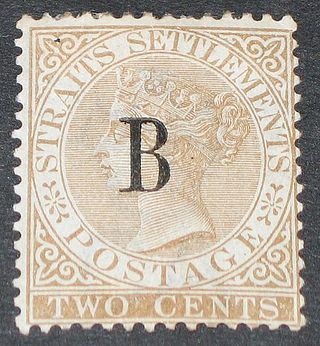
This is a survey of the postage stamps and postal history of the British post office in Bangkok, Thailand.
Harrison Donald Seaman Haverbeck or H.D.S. Haverbeck, FRPSL, RDP, was a noted philatelist and philatelic journalist, whose interests centered on India and Indian states, Tibet and Nepal.

The postage stamps and postal history of Christmas Island, in the Indian Ocean, was linked to its original economic situation until 1993. Mainly ruled by a phosphate production commission, the island was part of the British Straits Settlements colony from 1901 to 1942, then of Singapore from 1946 to 1958. Although it was placed under Australian control in 1958, the island remained postally and philatelically independent until 1993 when Australia Post became the island's postal operator.

The postage stamps and postal history of Norfolk Island depended on Australia until 1947, when the island, an Australian territory since 1914, received its own stamps and postal autonomy.

The Post Office of India of the British Raj entered into postal conventions with a few native states of India. As per the postal convention, existing adhesive stamps and postal stationery of British India were overprinted with the name of the state for use within each convention State, for mail from one convention state to another, and to destinations in British India. The state administrations, in turn, had to conform to a number of agreements covering the issuance of stamps, the rates of postage, and the exchange of mail.
This is a survey of the postage stamps and postal history of Brunei.
This is a survey of the postage stamps and postal history of the Republic of the Union of Myanmar, formerly known as Burma.

This is a survey of the postage stamps and postal history of Tristan da Cunha.
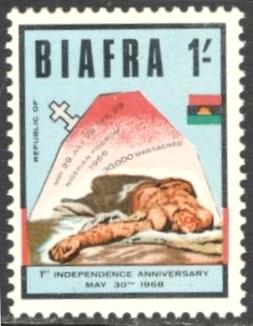
This is a survey of the postage stamps and postal history of Biafra.
The Philatelic Society of India (PSI) was formed in 1897 by a group of, mainly, expatriate Englishmen resident in the country as the first all-India philatelic society. During its first fifty years the society included most of the important Anglo-Indian philatelists and had a particularly strong publications record with two award-winning books. The society meets every first and third Saturday at the Mumbai G.P.O., convened by Dhirubhai Mehta, President, and D.M. Pittie, Hon. Secretary.

Sir Charles Stewart-Wilson was Barrister and an official in the Indian Civil Service who rose to become the Indian Director-General of Posts and Telegraphs.
British Somaliland, a British protectorate in present-day Somaliland, issued adhesive revenue or fiscal stamps between 1900 and 1904. All Somaliland fiscals were revenue stamps of India overprinted BRITISH SOMALILAND.
